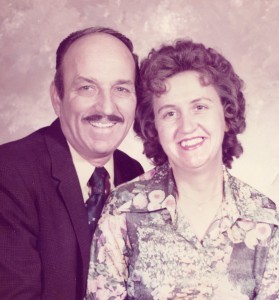 There are days when I find myself thinking more than normal about one or both of my parents, Allen and Collene Spencer, than normal, and May Day is one of the days that reminds me a lot of my mom. Mom loved the holidays, and while May Day isn’t a holiday, per se, it is a special day, and mom loved it. It was a day that she could give her girls something fun to do, while doing something fun for neighbors and friends too. Mom helped us make May baskets, fill them with candy, and told us to take them to the neighbors’ houses, hang them on the door, knock, and hide. It was the tradition of May Day, and Mom wanted us to know about it. We had so much fun making those baskets, but the real fun was in the giving of the baskets. There wasn’t a lot of candy in them. Just a few pieces, but our neighbors knew that we had left them a little bit of sweetness to brighten their day.
There are days when I find myself thinking more than normal about one or both of my parents, Allen and Collene Spencer, than normal, and May Day is one of the days that reminds me a lot of my mom. Mom loved the holidays, and while May Day isn’t a holiday, per se, it is a special day, and mom loved it. It was a day that she could give her girls something fun to do, while doing something fun for neighbors and friends too. Mom helped us make May baskets, fill them with candy, and told us to take them to the neighbors’ houses, hang them on the door, knock, and hide. It was the tradition of May Day, and Mom wanted us to know about it. We had so much fun making those baskets, but the real fun was in the giving of the baskets. There wasn’t a lot of candy in them. Just a few pieces, but our neighbors knew that we had left them a little bit of sweetness to brighten their day.

My mom was such a giving person, in so many ways. It wasn’t just May Day, or some other holiday, but really, every day. Mom gave of herself, in the kindnesses she showed, and if someone had a need, she did her best to supply that need. That was how she was raised. Her parents, George and Hattie Byer were givers, helping anyone who had a need. Their children saw that growing up, and it left a lasting impact on them too. Mom not only felt compelled to give, but she truly liked giving…from Girl Scout cookies to church to different causes she came across, Mom was a giver, and I know that she was always blessed because of it. Dad was also a giver, and they were always in agreement of these things. They taught us to be givers too, and we are all grateful for their teachings.
While May Day traditions have rather become a thing of the past, I will always remember them fondly. I think it  is sad that the May basket tradition has for the most part ceased to exist, and that makes me sad for the younger generations. Of course, with a few exceptions, most of us don’t often know our neighbors well…unless we have lived in an area for many years. Even then, people come and go, and it isn’t so easy to accept a basket of candy left on your door, unless you know for sure where it came from. It is an unfortunate side effect of the times we live in. I am thankful to have grown up in a gentler time, when May baskets could be given and received without worry about their contents, or the child giving them. Happy May Day everyone.
is sad that the May basket tradition has for the most part ceased to exist, and that makes me sad for the younger generations. Of course, with a few exceptions, most of us don’t often know our neighbors well…unless we have lived in an area for many years. Even then, people come and go, and it isn’t so easy to accept a basket of candy left on your door, unless you know for sure where it came from. It is an unfortunate side effect of the times we live in. I am thankful to have grown up in a gentler time, when May baskets could be given and received without worry about their contents, or the child giving them. Happy May Day everyone.
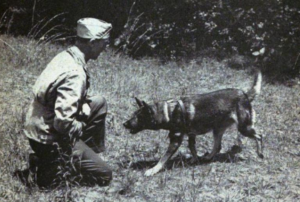 I think many people realize the usefulness of a dog as something other than a pet. Over the years, there have been seeing eye dogs, service dogs, and one I hadn’t heard of before…mercy dogs. During World War I, some 50,000 dogs were “employed” by both sides of the conflict as soldiers on both sides of the conflict as mercy dogs. You might wonder just what a mercy dogs is. While it is a rather sad one, the job the dogs had was actually had a very important job in the military. During battle, these dogs were sent out to find and help wounded men on the battlefield. They were very good at their jobs.
I think many people realize the usefulness of a dog as something other than a pet. Over the years, there have been seeing eye dogs, service dogs, and one I hadn’t heard of before…mercy dogs. During World War I, some 50,000 dogs were “employed” by both sides of the conflict as soldiers on both sides of the conflict as mercy dogs. You might wonder just what a mercy dogs is. While it is a rather sad one, the job the dogs had was actually had a very important job in the military. During battle, these dogs were sent out to find and help wounded men on the battlefield. They were very good at their jobs.
On their backs, the dogs carried medical supplies. They sought out injured soldiers. If a soldier was gravely wounded, the dogs would tear off a piece of his uniform, carry it back to camp, and help other soldiers to locate the man. Sometimes, the dogs found men who were beyond saving. In that case, they lay down next to him, so that the dying soldier didn’t have to die alone. These were true acts of mercy, and these dongs had true compassion for these men.
Mercy dogs were also known as ambulance dogs, Red Cross dogs, or casualty dogs. These dogs actually served in a paramedical role in the military…most notably during World War I, but also in World War II, and the Korean War. They have been credited with saving thousands of lives. The dogs were well trained and well suited for 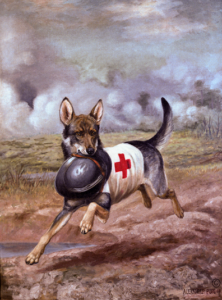 trench warfare. They were often sent out after large battles, where they would seek out wounded soldiers. They were also trained to guide combat medics to soldiers who required extensive care.
trench warfare. They were often sent out after large battles, where they would seek out wounded soldiers. They were also trained to guide combat medics to soldiers who required extensive care.
The first mercy dogs were actually trained by the German army in the late 19th century. The program to train mercy dogs in 1895 begun by Jean Bungartz in Germany was described as a “novel experiment” by those who knew about it. I’m sure they didn’t think it would actually work. Nevertheless, by 1908, Italy, Austria, and France had joined Germany in training programs for mercy dogs. Germany had around 6,000 trained dogs by the beginning of World War I. Many of the trained dogs were ambulance dogs. The German army called them Sanitätshunde or medical dogs. Germany is estimated to have used a total of 30,000 dogs during the war, mainly as messengers and ambulance dogs. Amazingly, only 7,000 of those were killed. Somehow, I would have expected there to be more deaths among the dogs. It is estimated that upwards of 50,000 dogs were successfully used by all of the nations involved in the war.
When World War I started, Britain did not have a program for training military dogs. Edwin Hautenville Richardson, who was an officer in the British Army had experience working with military dogs and had advocated for the start of a military program since 1910, but his program was not taken seriously. Nevertheless, he had trained several dogs as ambulance dogs on his own. He quickly offered them to the British Army. The army did not accept his offer, for some bizarre reason, so he gave them to the British Red Cross. As a result of his advocacy, Britain created a British War Dog School with Richardson as the commander. The school eventually trained more than 200 dogs. The British War Dog School was a grand success.
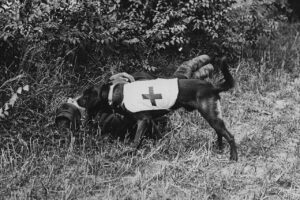
It is estimated that as many as 10,000 dogs served as mercy dogs in World War I, and are credited with saving thousands of lives, including at least 2,000 in France and 4,000 wounded German soldiers. There were several dogs that were specifically honored for their work. “Captain” was credited for finding 30 soldiers in one day, and “Prusco” for finding 100 men in just one battle. Both of these were French dogs. “Prusco” was known to drag soldiers into ditches as a safe harbor while he went to summon rescuers. Sadly, many French dogs were killed in the line of duty, and the program was discontinued. I suppose they thought it was inhumane, but I’m sure the dogs knew they were doing important work.
Written by guest writer: Corrie Petersen

 What a difference a year can make. Today is my mom, Caryn Schulenberg’s birthday and I’m the lucky one to write her post this year. Every day and every year things change. We never know what to expect next, but that’s ok because surprises are always fun.
What a difference a year can make. Today is my mom, Caryn Schulenberg’s birthday and I’m the lucky one to write her post this year. Every day and every year things change. We never know what to expect next, but that’s ok because surprises are always fun.
This last year has been full of changes in our family. The true blessing is that my mom has been here to be a part of all the changes. She was able to help welcome two more great grandsons, courtesy of my two sons, Chris and Josh Petersen and their wives, Karen and Athena. She was able to take several vacations with my dad, Bob 
 Schulenberg and most recently she was able to help my great aunt, Sandy Pattan in her time of need.
Schulenberg and most recently she was able to help my great aunt, Sandy Pattan in her time of need.
While I’m sure she didn’t plan to be a caregiver again, she wouldn’t have it any other way. Caregiving is in her heart, and she is very good at it, I might add. She was a caregiver for a very long time with her parents, Allen and Collene Spencer; my dad’s parents, Walt and Joann Schulenberg; and sister, Brenda Schulenberg. I have to wonder if choosing to help my Great Aunt Sandy was a blessing in disguise for both of them…a time of victory, healing, and reconnection.

 Mom has been retired for five years now, and she is still so busy. She finds time to walk nine miles every day, write her daily blog posts, read her Bible and go to church, and spend time with her family. She and my dad go to the Black Hills over the Independance Day week to go hiking, and they take a trip to Thermopolis each year around the time of their anniversary. They also try to get to Washington every other year to visit my sister, Amy Royce, her husband Travis, and her kids, Shai and Caalab. Oh…and she bowls once a week with my dad. Boy, that makes me tired just thinking about it, but that’s her life and she wouldn’t want it to be any different.
Mom has been retired for five years now, and she is still so busy. She finds time to walk nine miles every day, write her daily blog posts, read her Bible and go to church, and spend time with her family. She and my dad go to the Black Hills over the Independance Day week to go hiking, and they take a trip to Thermopolis each year around the time of their anniversary. They also try to get to Washington every other year to visit my sister, Amy Royce, her husband Travis, and her kids, Shai and Caalab. Oh…and she bowls once a week with my dad. Boy, that makes me tired just thinking about it, but that’s her life and she wouldn’t want it to be any different.
Today is my mom’s birthday and I hope she has the best day ever. I love you to the moon and back, mom.

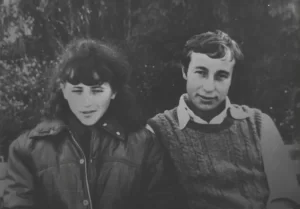 On April 26, 1986, an explosion in the Number 4 reactor of the Chernobyl Nuclear Power Plant, near the city of Pripyat in the north of the Ukrainian SSR, close to the border with the Byelorussian SSR, in the Soviet Union. So began what is considered the worst nuclear disaster in history. The Chernobyl disaster is one of only two nuclear energy accidents that was rated at seven, which is maximum severity on the International Nuclear Event Scale. The other one was the 2011 Fukushima nuclear accident in Japan, which of course, hadn’t happened yet. The cost of this disaster would be an enormous cost an estimated 18 billion roubles, which is roughly US$83 billion today. The initial emergency response and subsequent mitigation efforts involved more than 500,000 personnel. With all that, it is considered the worst nuclear disaster in history. Strange how the 4th worst disaster can also be considered the worst. I suppose it is in the cost to mitigate the damage and loss of life.
On April 26, 1986, an explosion in the Number 4 reactor of the Chernobyl Nuclear Power Plant, near the city of Pripyat in the north of the Ukrainian SSR, close to the border with the Byelorussian SSR, in the Soviet Union. So began what is considered the worst nuclear disaster in history. The Chernobyl disaster is one of only two nuclear energy accidents that was rated at seven, which is maximum severity on the International Nuclear Event Scale. The other one was the 2011 Fukushima nuclear accident in Japan, which of course, hadn’t happened yet. The cost of this disaster would be an enormous cost an estimated 18 billion roubles, which is roughly US$83 billion today. The initial emergency response and subsequent mitigation efforts involved more than 500,000 personnel. With all that, it is considered the worst nuclear disaster in history. Strange how the 4th worst disaster can also be considered the worst. I suppose it is in the cost to mitigate the damage and loss of life.
Volodymyr Pavlovych Pravyk was a Soviet firefighter, was born in the town of Chernobyl on June 13, 1962. His mother, Natalia Ivanova Pravyk, was a nurse, and his father, Pavel Opanasovich Pravyk, a construction worker. Pravyk took charge of the initial efforts to extinguish fires following the Chernobyl Disaster. I don’t know what measures were taken to protect the workers from radiation exposure, but I would expect that it was little to no protection. I would also expect that the equipment they did have was not what it needed to be to save them from radiation poisoning. After the event was over, Pravyk was hospitalized with acute radiation syndrome. For him, any improvements in protection would come too late. He died on May 11, 1986, just sixteen days later. Even though they could not save him, they knew that his actions were heroic. Pravyk was posthumously awarded the Hero of the Soviet Union and the Order of Lenin by the Soviet Union, and later the Ukrainian Star For Courage (later known as the Order for Courage) in recognition of his efforts.
It was later determined that a routine test at the power plant had gone horribly wrong, causing two massive 
 explosions that blew the 1,000-ton roof off one of the plant’s reactors. The explosions released 400 times more radiation than the atomic bomb dropped on Hiroshima. The disaster killed two workers in the initial explosions. Within months, at least 28 more would be dead by acute radiation exposure. Thousands of people would eventually show signs of health effects from the fallout, including cancer.
explosions that blew the 1,000-ton roof off one of the plant’s reactors. The explosions released 400 times more radiation than the atomic bomb dropped on Hiroshima. The disaster killed two workers in the initial explosions. Within months, at least 28 more would be dead by acute radiation exposure. Thousands of people would eventually show signs of health effects from the fallout, including cancer.
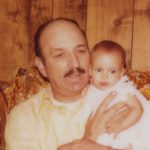
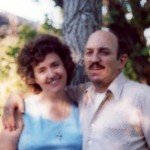 Since my Dad, Allen Spencer’s passing, our family has grown more than he probably ever could have imagined. He would be so pleased with the new spouses and all the new great great grandchildren he and my mom, Collene Spencer have now. Mom and Dad loved their family, and they always thought of children as a blessing from God. Dad loved playing with the little kids. He didn’t even have to get out of his chair. He sat in the kitchen, right beside the door. They kids would run past him while trying not to get swatted. Dad on the other hand tried to swat them before they could get past him. I can’t say who the biggest winner or loser was, but with all the loud screams and laughter, Mom would eventually get enough of the noise, and tell Dad to stop…good naturedly, and often while laughing. Still, I’m sure the noise got annoying at times. The little kids we have now, will never know their great great grandparents, until they go to Heaven anyway, and I find that very sad. They miss so much.
Since my Dad, Allen Spencer’s passing, our family has grown more than he probably ever could have imagined. He would be so pleased with the new spouses and all the new great great grandchildren he and my mom, Collene Spencer have now. Mom and Dad loved their family, and they always thought of children as a blessing from God. Dad loved playing with the little kids. He didn’t even have to get out of his chair. He sat in the kitchen, right beside the door. They kids would run past him while trying not to get swatted. Dad on the other hand tried to swat them before they could get past him. I can’t say who the biggest winner or loser was, but with all the loud screams and laughter, Mom would eventually get enough of the noise, and tell Dad to stop…good naturedly, and often while laughing. Still, I’m sure the noise got annoying at times. The little kids we have now, will never know their great great grandparents, until they go to Heaven anyway, and I find that very sad. They miss so much.
My sisters and I will always be thankful for the wonderful parents we were blessed with. We always knew that no matter what mistakes we made, we always had their love. Dad was the problem solver. My early school years found me struggling with two subjects that would later become my favorites…Mathematics and History. Mom would tell me that there would be trouble when my dad got home. I think she thought I wasn’t applying 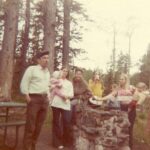
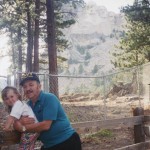 myself. Then, when my dad got home and saw the progress report, he said, “Well, I guess we will need to work on this.” We did work on it. Dad leading the way, and I ended up excelling in Mathematics, and while I did ok in history, it wasn’t my favorite subject until much later on…when I was a parent. Some people might think that I did better because my dad made me work harder, but I think he was the better teacher.
myself. Then, when my dad got home and saw the progress report, he said, “Well, I guess we will need to work on this.” We did work on it. Dad leading the way, and I ended up excelling in Mathematics, and while I did ok in history, it wasn’t my favorite subject until much later on…when I was a parent. Some people might think that I did better because my dad made me work harder, but I think he was the better teacher.
My dad loved to travel, and wanted to show his girls just how wonderful this nation we lived in really was. We traveled and camped out every summer. When we went back to school and the teachers asked what we had done over the summer, we always told them about our trips. The teachers told us we were blessed to get to go so many places…and we were. Most of us have been to almost all the 50 states, with just a few exceptions, but there is still time for us, so that could change. We definitely got our love of travel from our parents, and for that we are all grateful. It is something that has enriched our lives greatly.
Of course, we also got our faith from our parents. No matter what things we faced, we knew that God was with us and that everything would be ok. We went to church regularly, and we watched our parents use their faith in 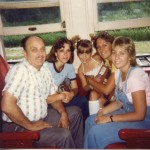
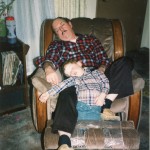 every situation. We will always be thankful for that Christian upbringing. It shaped the strong women we have become. These days, our upbringing continues to make us the people we are. We try to be kind and loving, just like our parents. If we can grow to be even half the people they were, I would say that they were successful in raising us. Today would have been my dad’s 100th birthday. I wish he had been able to be here to celebrate with us. Nevertheless, today we celebrate his life, and we thank God for giving him to us. Happy birthday in Heaven, Dad. We love and miss you every day and very much.
every situation. We will always be thankful for that Christian upbringing. It shaped the strong women we have become. These days, our upbringing continues to make us the people we are. We try to be kind and loving, just like our parents. If we can grow to be even half the people they were, I would say that they were successful in raising us. Today would have been my dad’s 100th birthday. I wish he had been able to be here to celebrate with us. Nevertheless, today we celebrate his life, and we thank God for giving him to us. Happy birthday in Heaven, Dad. We love and miss you every day and very much.
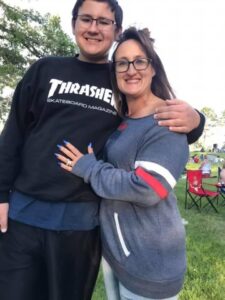
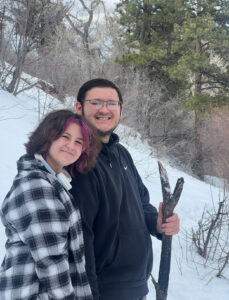 My grandnephew, Zack Spethman is such a sweet young man. He always has been. Since he was a little boy, Zack was a hugger. It’s a rare trait in a boy, especially as they get to the teenage years, to always hug the people they love. So many boys are embarrassed by aunts, uncles, and even parents who want to give them a hug. These boys are coming into manhood, after all. They have to act macho, or so many of them think, but not Zack. He is so confident in himself, that he feels totally comfortable hugging the people he loves. It really makes you feel special to know that this boy, now a man, seeks you out to tell you that he loves you. Zack is a very social person, and loves hanging out with all of his family and friends.
My grandnephew, Zack Spethman is such a sweet young man. He always has been. Since he was a little boy, Zack was a hugger. It’s a rare trait in a boy, especially as they get to the teenage years, to always hug the people they love. So many boys are embarrassed by aunts, uncles, and even parents who want to give them a hug. These boys are coming into manhood, after all. They have to act macho, or so many of them think, but not Zack. He is so confident in himself, that he feels totally comfortable hugging the people he loves. It really makes you feel special to know that this boy, now a man, seeks you out to tell you that he loves you. Zack is a very social person, and loves hanging out with all of his family and friends.
Zack has grown into a tall man now. He towers over the short women in our family, which is most of us. His mom, Jenny Spethman tells me that he is a momma’s boy, but she doesn’t mean that in a negative way. He and Jenny share a number of interests like hiking and climbing. 
 Zack is always up for a hike with his mom, and she likes it, because not everyone wants to go. Nevertheless, Zack will always go climbing and hiking with her. He is also very good to his little sister, Aleesia, helping her with whatever she needs help with, and helping her with climbing to make sure she is safe. While he likes hanging out with his mom, Zack also like the guy things…especially hunting with his dad, Steve Spethman, and his brothers, Xander and Isaac. The guys are very good hunters, and always get enough to supply the family with meat for the next year. The hunts are great financial blessings to their family.
Zack is always up for a hike with his mom, and she likes it, because not everyone wants to go. Nevertheless, Zack will always go climbing and hiking with her. He is also very good to his little sister, Aleesia, helping her with whatever she needs help with, and helping her with climbing to make sure she is safe. While he likes hanging out with his mom, Zack also like the guy things…especially hunting with his dad, Steve Spethman, and his brothers, Xander and Isaac. The guys are very good hunters, and always get enough to supply the family with meat for the next year. The hunts are great financial blessings to their family.
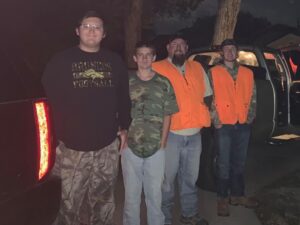
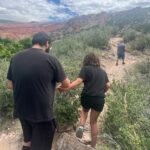 Zack is a smart kid. He was on the honor roll every quarter this year. With all the things Zack is good at, Trivia would not be something I would expect. In fact, Jenny says he has surprised everyone at how good he was at trivia. There is a lot more to Zack than sports and activities. He is a deep thinker too. He likes to reason things out, and he likes learning. I don’t know what his future plans are, but Zack can do anything he wants to do. Today is Zack’s 19th birthday. Happy birthday Zack!! Have a great day!! We love you!!
Zack is a smart kid. He was on the honor roll every quarter this year. With all the things Zack is good at, Trivia would not be something I would expect. In fact, Jenny says he has surprised everyone at how good he was at trivia. There is a lot more to Zack than sports and activities. He is a deep thinker too. He likes to reason things out, and he likes learning. I don’t know what his future plans are, but Zack can do anything he wants to do. Today is Zack’s 19th birthday. Happy birthday Zack!! Have a great day!! We love you!!
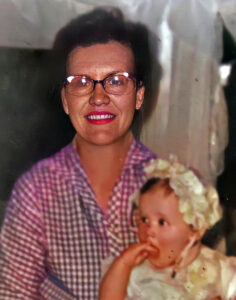
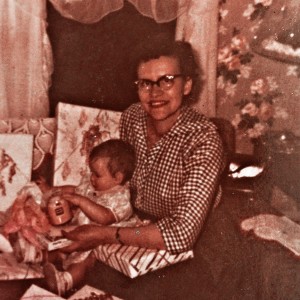 It’s not every day that someone turns 100 years old, but today, that can be said of my aunt, Doris Spencer. She is the last of my aunts and uncles on my dad’s side, and I’m sure it never occurred to her that she might achieve that grand age. Everyone marks the day they hit double digits, but very few people hit triple digits. Just imagine…living for a whole century. What changes she must have seen in all those years. In 1924, the life expectancy was 54.1 years. Of course, that was the average age that people were dying, not how long those born that year were expected to live. Still, Aunt Doris has far exceeded that number and is even beyond the current life expectancy, which is 73.33 years. The average income in 1924 was $2,196 a year, which made the cost of a new car ($265) and a house ($7,720) seem like a whole lot of money. A stamp cost 2 cents. Oh that we could have those pices with today’s income, but let’s face it, that isn’t even reasonable.
It’s not every day that someone turns 100 years old, but today, that can be said of my aunt, Doris Spencer. She is the last of my aunts and uncles on my dad’s side, and I’m sure it never occurred to her that she might achieve that grand age. Everyone marks the day they hit double digits, but very few people hit triple digits. Just imagine…living for a whole century. What changes she must have seen in all those years. In 1924, the life expectancy was 54.1 years. Of course, that was the average age that people were dying, not how long those born that year were expected to live. Still, Aunt Doris has far exceeded that number and is even beyond the current life expectancy, which is 73.33 years. The average income in 1924 was $2,196 a year, which made the cost of a new car ($265) and a house ($7,720) seem like a whole lot of money. A stamp cost 2 cents. Oh that we could have those pices with today’s income, but let’s face it, that isn’t even reasonable. 
At the time that Aunt Doris was born, Calvin Coolidge was President of the United States, and we had no vice-president from 1923 to 1925, that might seem odd, and in fact, it is unusual, but not unheard of. In fact, there were eighteen presidents who served all or part of their term with no vice-president, and four that served the whole term without a vice-president. Coolidge becme president when Warren Harding died suddenly in 1923. So he had no vice-president. He was re-elected in his own right in 1924, and could have run again in 1928, but chose not to. Of course, none of that made any difference to Aunt Doris, who was just a newborn then, but I’m sure she would find it interesting to note.
Aunt Doris and my Uncle Bill Spencer had three children, Pamela “Pam” (Spencer) Wendling in late 1954, William “Bill” Spencer Jr in 1959, and James “Jim” Spencer in 1962. She has also been blessed with five grandchildren, four great grandchildren and one bonus great granddaughter. She has had a happy life, and she 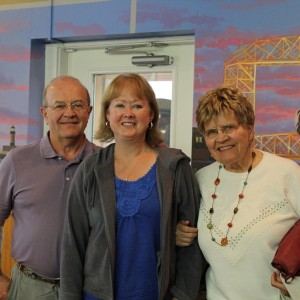
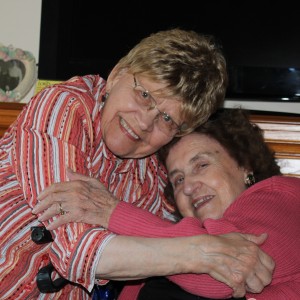 has always been a blessing to many people. She and my mom, Collene Spencer were best friends, and loved living across the yard from each other when my family lived in Superior, Wisconsin. When we moved to Casper, Wyoming, the friends really missed each other. I was so glad that my sister, Cheryl Masterson and I took Mom to Wisconsin to visit before she passed away in 2015. I know it meant so much to both of them. I am so glad we gave them that gift, and I’m so glad that my Aunt Doris has made it to triple digits. Today is Aunt Doris’ 100th birthday. Happy birthday Aunt Doris!! Have a wonderful day!! We love you!!
has always been a blessing to many people. She and my mom, Collene Spencer were best friends, and loved living across the yard from each other when my family lived in Superior, Wisconsin. When we moved to Casper, Wyoming, the friends really missed each other. I was so glad that my sister, Cheryl Masterson and I took Mom to Wisconsin to visit before she passed away in 2015. I know it meant so much to both of them. I am so glad we gave them that gift, and I’m so glad that my Aunt Doris has made it to triple digits. Today is Aunt Doris’ 100th birthday. Happy birthday Aunt Doris!! Have a wonderful day!! We love you!!
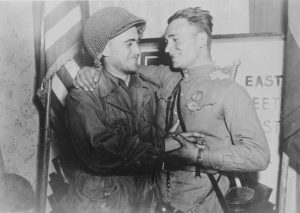 Sometimes, an event that potentially changed history, ends up getting little or no recognition. Thankfully, the picture that marked the event was taken, or the entire event might never have been noticed in history at all. This particular day is actually a very important day in the history of World War II, and therefore, the world. Elbe Day, which took place on April 25, 1945, is the day Soviet and American troops met at the Elbe River, near Torgau in Germany. This event marked an important step toward the end of World War II in Europe. If you have ever heard the saying, divide and conquer, you will know basically what happened on Elbe Day. A secret mission had been planned, and April 25, 1945, was the day it was carried out.
Sometimes, an event that potentially changed history, ends up getting little or no recognition. Thankfully, the picture that marked the event was taken, or the entire event might never have been noticed in history at all. This particular day is actually a very important day in the history of World War II, and therefore, the world. Elbe Day, which took place on April 25, 1945, is the day Soviet and American troops met at the Elbe River, near Torgau in Germany. This event marked an important step toward the end of World War II in Europe. If you have ever heard the saying, divide and conquer, you will know basically what happened on Elbe Day. A secret mission had been planned, and April 25, 1945, was the day it was carried out.
The plan was to have the Soviet army advance from the East, and the US Army advance from the West. The first contact between American and Soviet patrols occurred near Strehla exactly as planned, after First Lieutenant Albert Kotzebue, an American soldier, crossed the Elbe River in a boat with three men of an intelligence and reconnaissance platoon. Once they crossed to the east bank of the river, they met up with 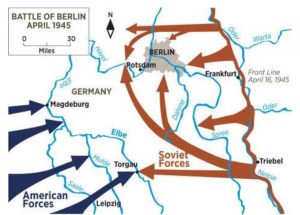 forward elements of a Soviet Guards rifle regiment of the First Ukrainian Front, under the command of Lieutenant Colonel Alexander Gardiev. Later that day, another patrol under Second Lieutenant William Robertson with Frank Huff, James McDonnell and Paul Staub met a Soviet patrol commanded by Lieutenant Alexander Silvashko on the destroyed Elbe bridge of Torgau. When the two armies connected at the Elbe River, the cutting of Germany in half is accomplished. In doing so, the strength of the German army was severely weakened. The German army was split in two, just like the country was, and in the end, that split made it impossible for the Germans to really fight the war they were engaged in. It was the beginning of the end for them.
forward elements of a Soviet Guards rifle regiment of the First Ukrainian Front, under the command of Lieutenant Colonel Alexander Gardiev. Later that day, another patrol under Second Lieutenant William Robertson with Frank Huff, James McDonnell and Paul Staub met a Soviet patrol commanded by Lieutenant Alexander Silvashko on the destroyed Elbe bridge of Torgau. When the two armies connected at the Elbe River, the cutting of Germany in half is accomplished. In doing so, the strength of the German army was severely weakened. The German army was split in two, just like the country was, and in the end, that split made it impossible for the Germans to really fight the war they were engaged in. It was the beginning of the end for them.
Finally, on April 26, the commanders of the 69th Infantry Division of the First Army (United States) and the 58th Guards Rifle Division of the 5th Guards Army (Soviet Union) met at Torgau, southwest of Berlin. They knew that this moment was monumental, and it had to be documented. Arrangements were made for the 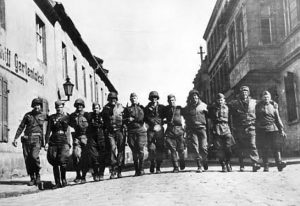 formal “Handshake of Torgau” photo to be taken of Robertson and Silvashko the following day, April 27. The Soviet, American, and British governments released simultaneous statements that evening in London, Moscow, and Washington, “reaffirming the determination of the three Allied powers to complete the destruction of the Third Reich.” They knew they must have victory at all costs.
formal “Handshake of Torgau” photo to be taken of Robertson and Silvashko the following day, April 27. The Soviet, American, and British governments released simultaneous statements that evening in London, Moscow, and Washington, “reaffirming the determination of the three Allied powers to complete the destruction of the Third Reich.” They knew they must have victory at all costs.
The fact that Elbe Day has never been an official holiday in any country, has not stopped people from looking to the day as something very special, and in the years after 1945 the memory of this friendly encounter gained new significance in the context of the Cold War between the United States and the Soviet Union.
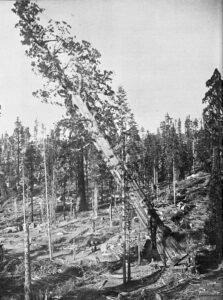
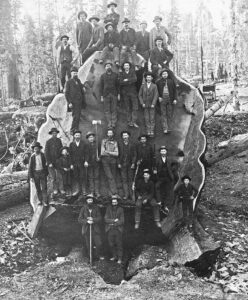 If you have ever wondered about the stupid things people can do, consider this. Most people have heard about the Redwoods in California. Trees just seem to grow much bigger in California, and if you have ever toured the Redwood National and State Parks, you will know what I mean. There is also a Sequoia National Park, and bordering that the Kings Canyon National Park, which was the location of the Mark Twain Tree…a giant sequoia tree located in the Big Stump Forest of Kings Canyon National Park. The giant tree was named after the American writer and humorist Mark Twain. The tree stood 331 feet tall and stretched 16 feet in diameter. It was an amazing tree, but there were people back East and in Europe who did not believe that trees could grow that big. In the late 1800s, travel across the country or from Europe just to see a big tree, was apparently not feasible. Now, I get that it could be difficult, and I get that the government wanted to prove that the tree existed, but what they did was no more than a display of stupidity.
If you have ever wondered about the stupid things people can do, consider this. Most people have heard about the Redwoods in California. Trees just seem to grow much bigger in California, and if you have ever toured the Redwood National and State Parks, you will know what I mean. There is also a Sequoia National Park, and bordering that the Kings Canyon National Park, which was the location of the Mark Twain Tree…a giant sequoia tree located in the Big Stump Forest of Kings Canyon National Park. The giant tree was named after the American writer and humorist Mark Twain. The tree stood 331 feet tall and stretched 16 feet in diameter. It was an amazing tree, but there were people back East and in Europe who did not believe that trees could grow that big. In the late 1800s, travel across the country or from Europe just to see a big tree, was apparently not feasible. Now, I get that it could be difficult, and I get that the government wanted to prove that the tree existed, but what they did was no more than a display of stupidity.
So, the solution was hatched. In 1891, the US Army arrived in California. Their mission was simple. Cut down 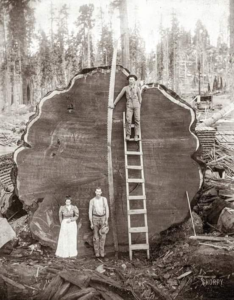 the famous Mark Twain tree so that slices of it could be sent to the American Museum of Natural History. In what is now Kings Canyon National Park, soldiers approached the giant sequoia tree and promptly cut it down. The tree, well known as it was, inspired wonder and doubt from those who had heard about it. Slices of the Mark Twain Tree were sent back to the East Coast and Europe, where it was displayed at museums in New York and London.
the famous Mark Twain tree so that slices of it could be sent to the American Museum of Natural History. In what is now Kings Canyon National Park, soldiers approached the giant sequoia tree and promptly cut it down. The tree, well known as it was, inspired wonder and doubt from those who had heard about it. Slices of the Mark Twain Tree were sent back to the East Coast and Europe, where it was displayed at museums in New York and London.
The project took 13 days and was carried out by lumbermen Bill Mills and SD Phips, with assistance from Barney and John Lukey. The tree was later shipped to the American Museum of Natural History in New York and the British Museum in London at the expense of Collis P Huntington, the president of the Southern Pacific Railroad. I suppose it is easy enough to understand why people couldn’t believe the huge trees were real. And for the Sequoia trees, even though the Sequoia National Park was established in 1890, access to the sequoia groves was difficult and the existence of such large trees was not widely believed at the time. I suppose some people might think that could justify the actions of the US Army and the US government, but to me it was a travesty, and a complete display of stupidity. So, to prove the tree could grow that big, they killed it, so they couldn’t see how big it could really grow. All to prove a point, 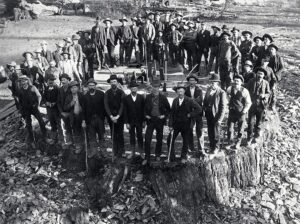
 because there were those who thought the story was bogus.
because there were those who thought the story was bogus.
Today, you can see the Mark Twain stump, and the other remains of the tree, which are preserved as part of the Big Stump Picnic Area in Kings Canyon National Park. The stump is near the entrance to Grant Grove. The stump stands there as a monument to the stupidity of some men.


